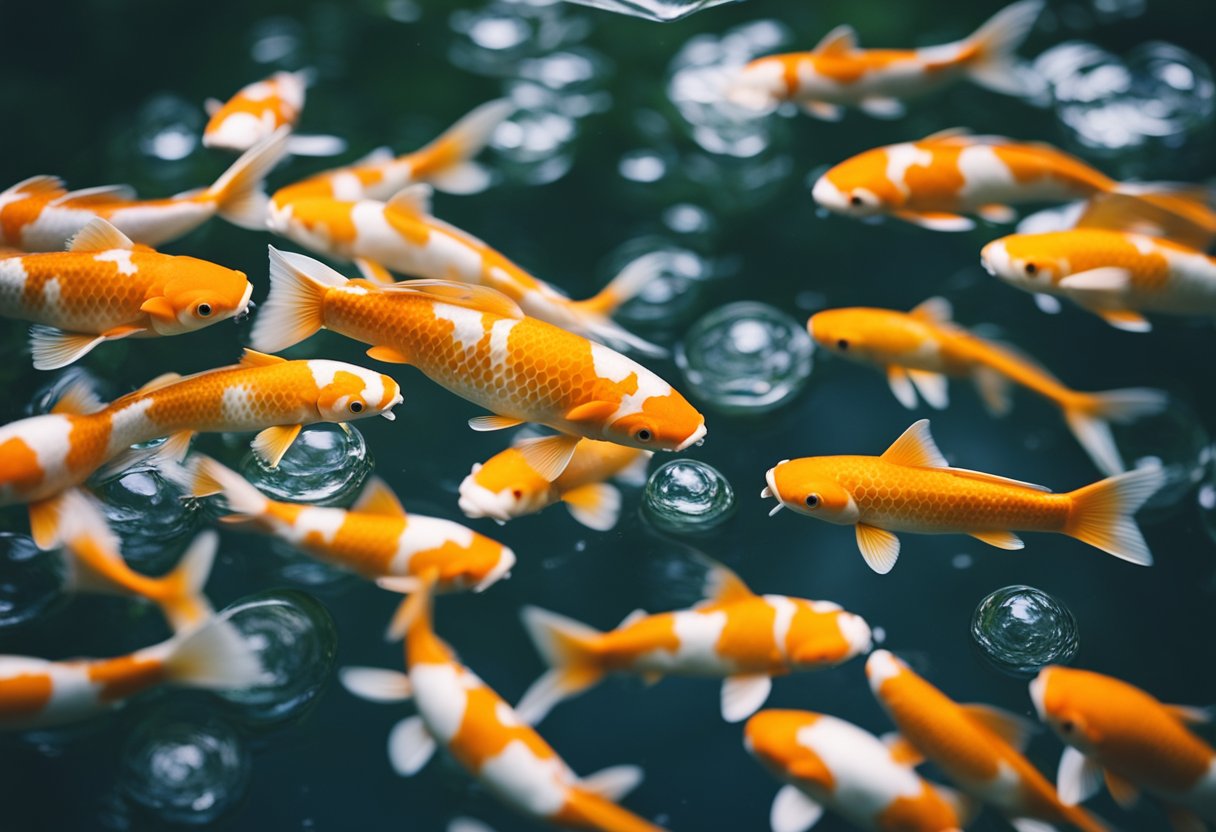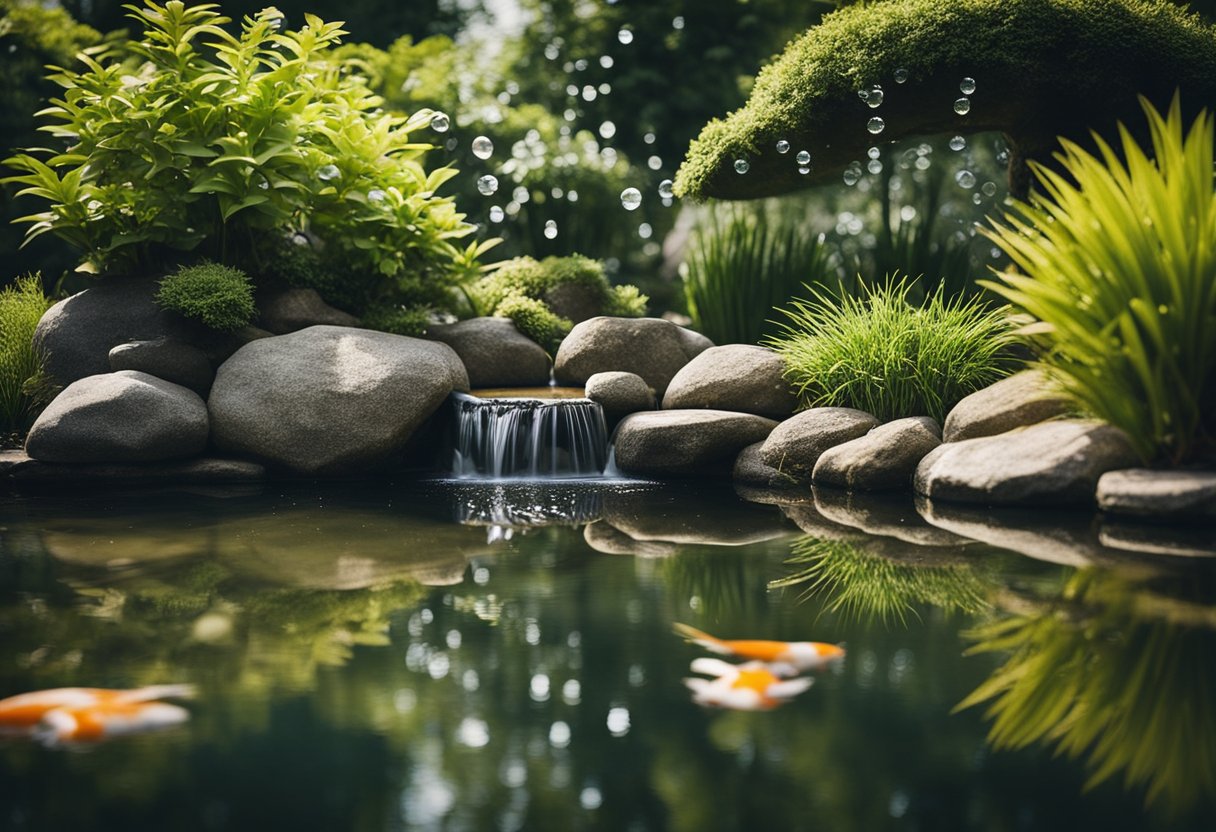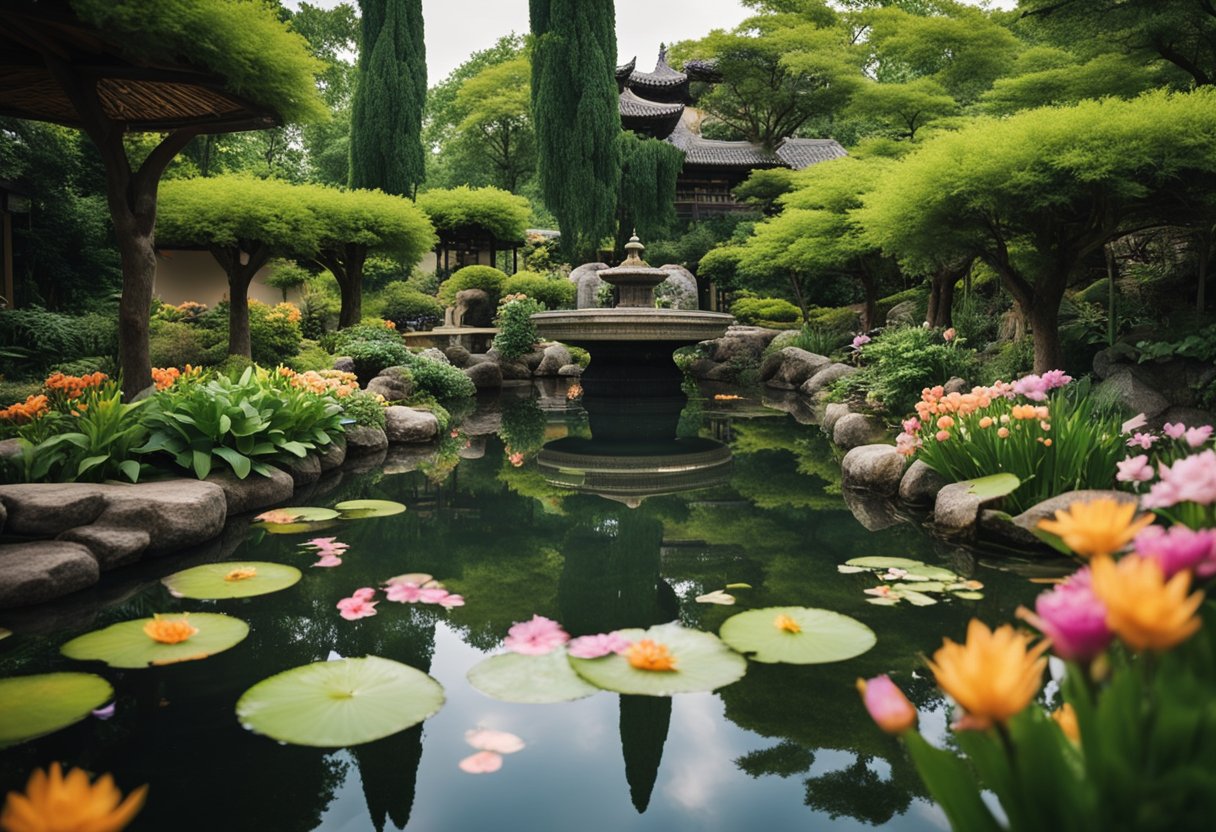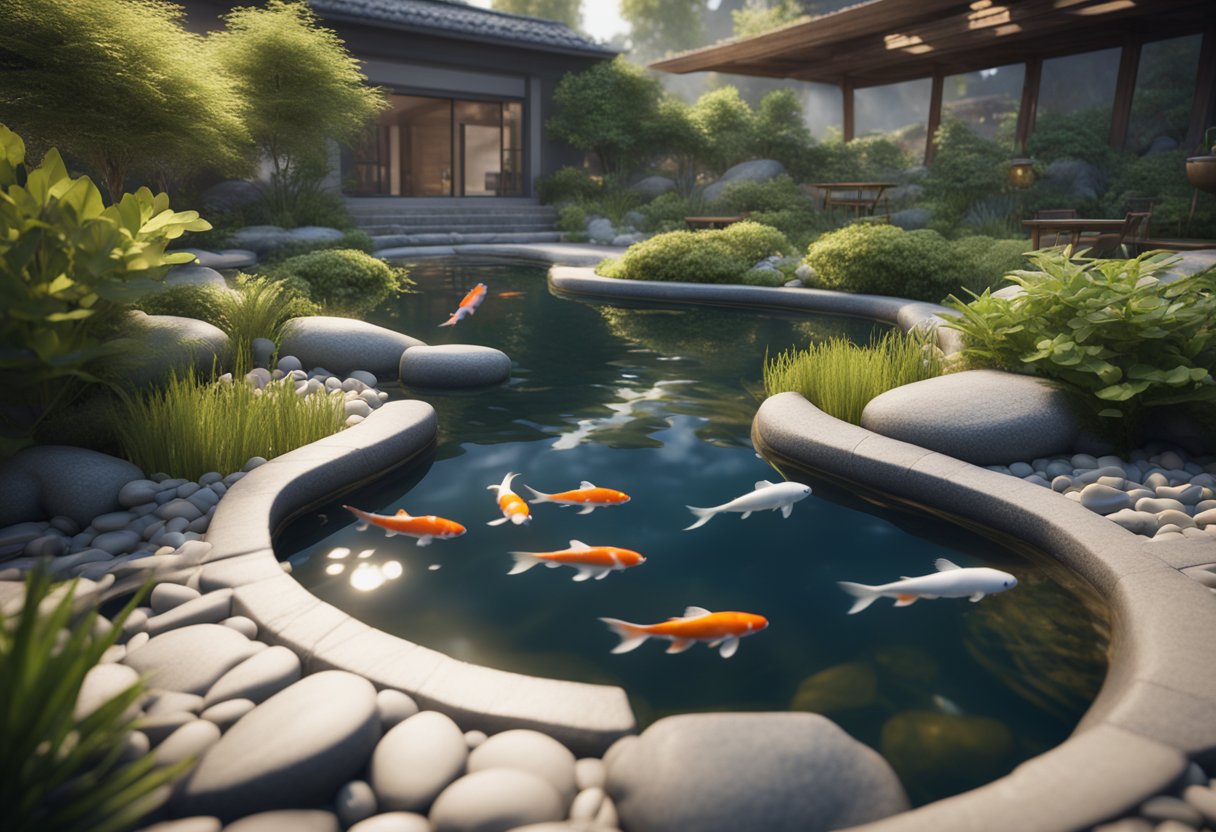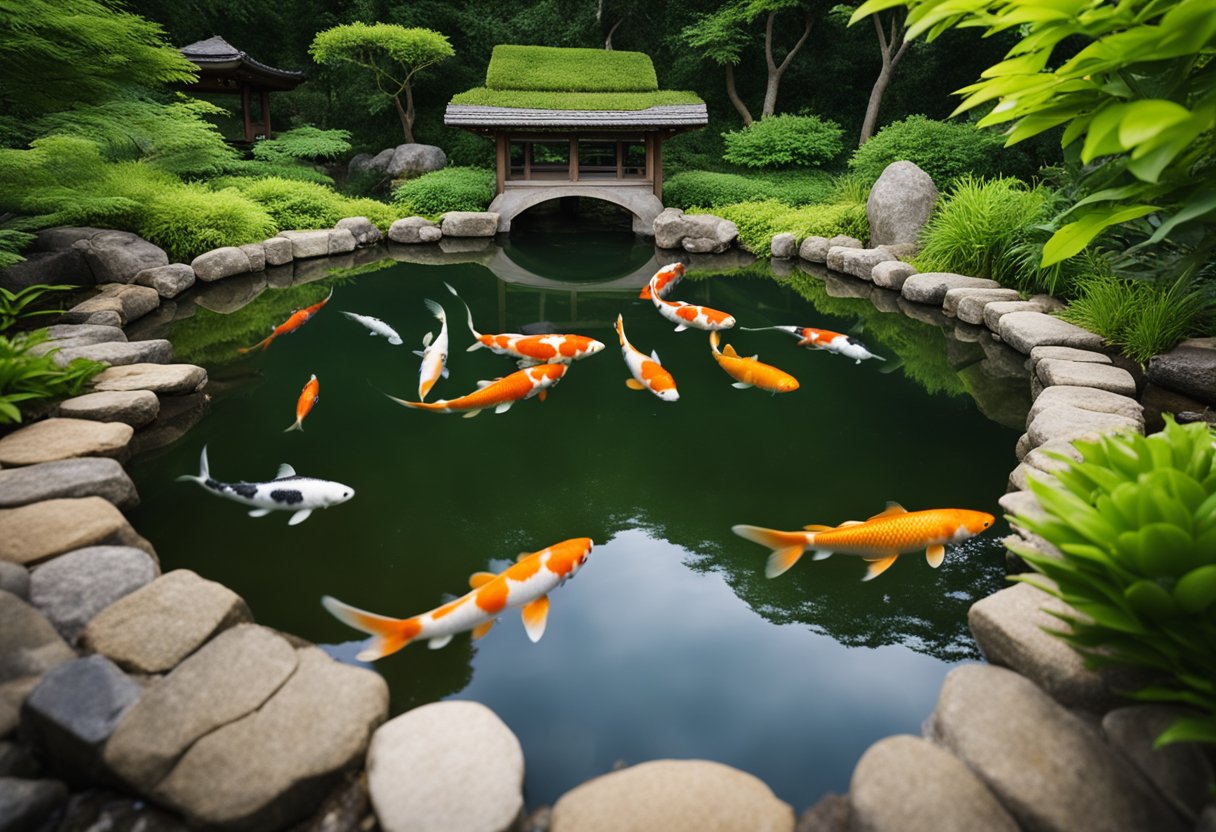Koi ponds are the pride of many homeowners, offering a serene and beautiful space to showcase these stunning fish. However, maintaining the health and beauty of koi fish requires more than just regular feeding and maintenance. The quality of the water they live in plays a vital role in their well-being. That’s where koi pond aeration methods come into play.
In this article, we will explore the various techniques and aeration systems available to enhance water quality in koi ponds. By understanding the importance of aeration and how it contributes to the overall health of koi fish, you can provide them with a thriving environment.
Improving water quality in koi ponds is the key to a successful and beautiful koi pond. Let’s dive into the world of koi pond aeration methods and discover the best practices for maintaining optimal conditions for these magnificent fish.
Understanding the Importance of Aeration for Koi Ponds
Koi pond oxygenation techniques play a crucial role in maintaining optimal conditions for the health and well-being of koi fish. Proper aeration is essential for promoting a thriving aquatic environment and ensuring the longevity of your prized koi. Let’s explore the benefits of pond aeration for koi fish and understand why it is a vital aspect of koi pond maintenance.
The Benefits of Pond Aeration for Koi Fish
Effective pond aeration provides numerous benefits that contribute to the overall health and vitality of koi fish. Here are some key advantages:
- Increased Oxygen Levels: Aeration helps to oxygenate the water, providing a plentiful supply of dissolved oxygen for the koi to breathe. This is especially crucial during hot summer months when oxygen levels tend to drop.
- Improved Water Circulation: By creating movement and circulation, aeration helps to distribute oxygenated water evenly throughout the pond. This prevents stagnant areas and promotes a healthy aquatic environment.
- Enhanced Waste Breakdown: Proper aeration aids in the breakdown of organic waste, such as fish waste and decaying matter. This helps to maintain water quality and reduces the risk of harmful pollutants accumulating in the pond.
- Reduced Algae Growth: Oxygenation inhibits the growth of algae by creating unfavorable conditions for their development. This leads to cleaner water and reduces the risk of algae-related issues, such as oxygen depletion and poor water clarity.
- Decreased Risk of Fish Stress and Disease: Well-oxygenated water minimizes stress on koi fish, making them less susceptible to diseases and infections. It also supports their immune system, allowing them to thrive and exhibit vibrant colors.
By incorporating effective koi pond oxygenation techniques, you provide your koi fish with a healthy and thriving habitat. Aeration ensures the ideal balance of oxygen and circulation in the water, creating a harmonious environment that promotes growth, color development, and overall well-being.
Different Types of Aeration Systems for Koi Ponds
When it comes to maintaining a healthy and thriving koi pond, choosing the right aeration system is crucial. Different aeration methods offer unique advantages and limitations, catering to various pond sizes, budgets, and environmental conditions. In this section, we will explore some of the best aeration methods for koi ponds, including diffused aeration, surface aerators, and waterfall filters, along with their pros and cons.
Diffused Aeration
Diffused aeration systems, also known as bottom aeration, are widely popular for their effectiveness in oxygenating large koi ponds. These systems consist of air compressors that push air through diffusers placed at the bottom of the pond. The small bubbles generated rise to the surface, facilitating oxygen transfer and maintaining healthy oxygen levels throughout the pond.
- Pros of Diffused Aeration:
- Highly efficient in oxygenating large ponds
- Improves overall water quality
- Helps prevent stratification and stagnant areas
- Cons of Diffused Aeration:
- Requires electricity to operate
- Initial installation can be more expensive
Surface Aerators
Surface aerators, also known as floating aerators, are an excellent option for smaller koi ponds or ponds with shallow depths. These systems create movement on the water’s surface, resulting in increased oxygen exchange. Surface aerators typically consist of a motorized unit with a propeller or impeller that agitates the water, enhancing aeration.
- Pros of Surface Aerators:
- Great for smaller ponds and shallow depths
- Relatively easy to install and maintain
- Provides aesthetically pleasing water movement
- Cons of Surface Aerators:
- May not be suitable for larger ponds
- Needs regular cleaning to prevent clogging
- Noisy operation compared to other methods
Waterfall Filters
Waterfall filters, also known as waterfall spillways, serve a dual purpose by providing both biological filtration and aeration. These systems use a series of waterfalls or cascades to create oxygen-rich water movement. As the water flows over rocks and other media, it gets infused with oxygen, while the filtration process removes debris and pollutants, ensuring a healthy pond environment.
- Pros of Waterfall Filters:
- Combines aeration and filtration in one system
- Natural and visually appealing water feature
- Provides oxygen-rich water flow for koi fish
- Cons of Waterfall Filters:
- May require more space and landscaping considerations
- Installation can be more complex
When selecting the best aeration method for your koi pond, it’s essential to consider factors such as pond size, depth, fish population, and budget. Additionally, it’s important to assess the energy requirements and maintenance needs of each system. By understanding the pros and cons of different pond aeration systems, you can make an informed decision that will ensure optimal aeration and enhance the health of your koi fish.
The Role of Water Circulation in Aeration
Water circulation plays a crucial role in enhancing aeration in koi ponds. Proper circulation helps distribute oxygen evenly throughout the pond and promotes better water quality for the health and vitality of koi fish. Here are some DIY solutions and tips to improve water circulation and optimize aeration in your koi pond:

